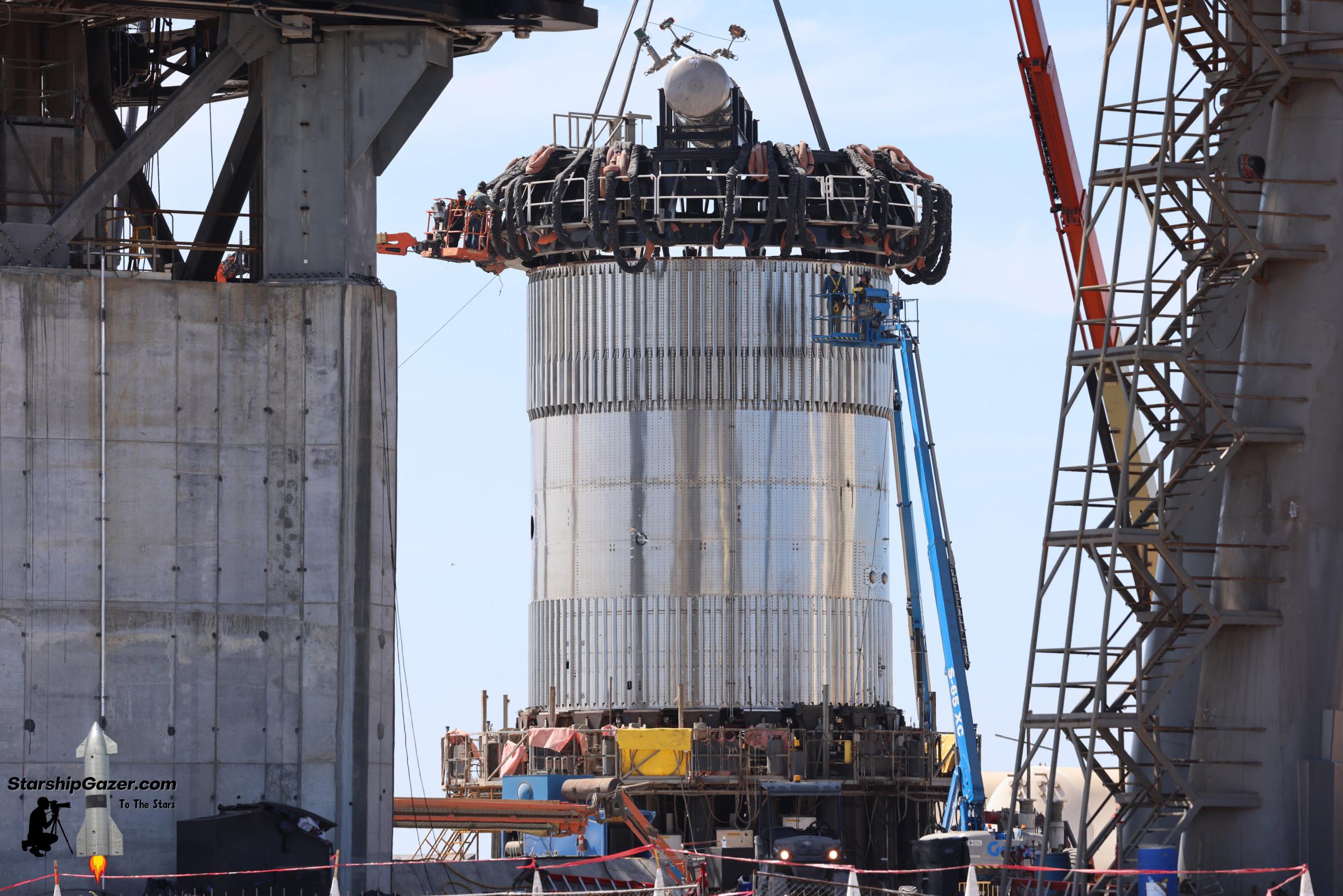
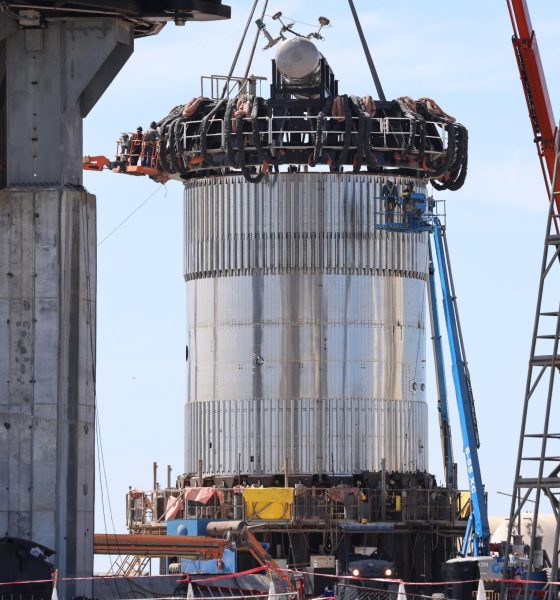
News
SpaceX to attempt to crush Starship test tank
A week after rolling a different ‘test tank’ from its South Texas Starship factory to nearby launch and test facilities, SpaceX has moved a second test tank to the pad.
Hearkening back to a period in 2020 where SpaceX built and tested six different Starship test tanks in a period of six months, the company appears to be preparing to test another batch of tanks in the hopes of qualifying Super Heavy booster design changes and clearing the way for a significant upgrade to all Starship tank domes. The sequencing of the latest tank raises some questions, however.
Known unofficially as the “EDOME” tank in reference to a cryptic label on the side of one of its halves, the first new test tank’s purpose is much more cut and dry. While its steel rings appear to be unchanged from current Starship and Super Heavy prototypes, the tank’s two domes share almost nothing in common with the dozens of domes SpaceX has built and tested over the last three years of development. The new domes are much simpler and should be easier to manufacture than the domes SpaceX is familiar with. Thanks to their more spherical shape, they should also be more efficient, allowing future Starship tanks to store a bit more propellant while taking up the same amount of vertical space. SpaceX has yet to begin testing the EDOME tank since its June 8th rollout and does not appear to be much closer to starting 12 days later.
On June 16th, SpaceX rolled a second test tank to the launch site, which eventually joined the EDOME tank at a staging area that used to be a Starship landing pad. Whereas the EDOME tank is more of a generic test article, the second tank – known as B7.1 – is specifically designed to test Super Heavy booster design changes.
B7.1 is a bit like a miniature Super Heavy. Its three-ring top section is mostly similar to the top section of a booster and is reinforced with dozens of external stringers. Oddly, it is missing cutouts for grid fins, and the tank’s forward dome does not have the reaction frame those hypothetical grid fins would anchor to. On the tank’s bottom half, the same stringers are present, and the tank features a new design that squeezes four slightly shorter rings into the same height as three. The Super Heavy thrust dome those rings enclose is also a new design that expands the number of central Raptor engines from 9 to 13.
It’s unsurprising that SpaceX wants to test those significant design changes. SpaceX did technically conduct a similar test in mid-2021 with a test tank known as BN2.1, but that tank featured a thrust dome with room for 9 older Raptors that would have generated about ~1700 tons of thrust. B7.1’s testing will go a step further than BN2.1 and use a structural test stand that should allow SpaceX to simulate the compressive forces Super Heavy boosters might experience in flight, adding another dimension of stress on top of the 13 hydraulic rams that will simultaneously subject the test tank to the equivalent of ~3000 tons (~6.6M lbf) of thrust.
And lift over to the crusher for a nice bit of torture. pic.twitter.com/SxV3BTs7ry— Chris Bergin – NSF (@NASASpaceflight) June 19, 2022
What is surprising, however, is the fact that SpaceX has waited so long to build and test a tank like B7.1. SpaceX has already completed an entire Super Heavy booster (B7) with all the design changes B7.1 is meant will test and recently installed 33 new Raptor 2 engines on that prototype. A second upgraded booster, B8, is also nearly finished. In that sense, B7.1 is quite unusual and feels more like a reluctant afterthought than part of a methodical development process. If B7.1 suffers an unintentional failure during testing, SpaceX could be forced to abandon two nearly-finished Super Heavy boosters, wasting months of assembly and testing and rendering prototypes that are likely worth tens of millions of dollars all but useless.
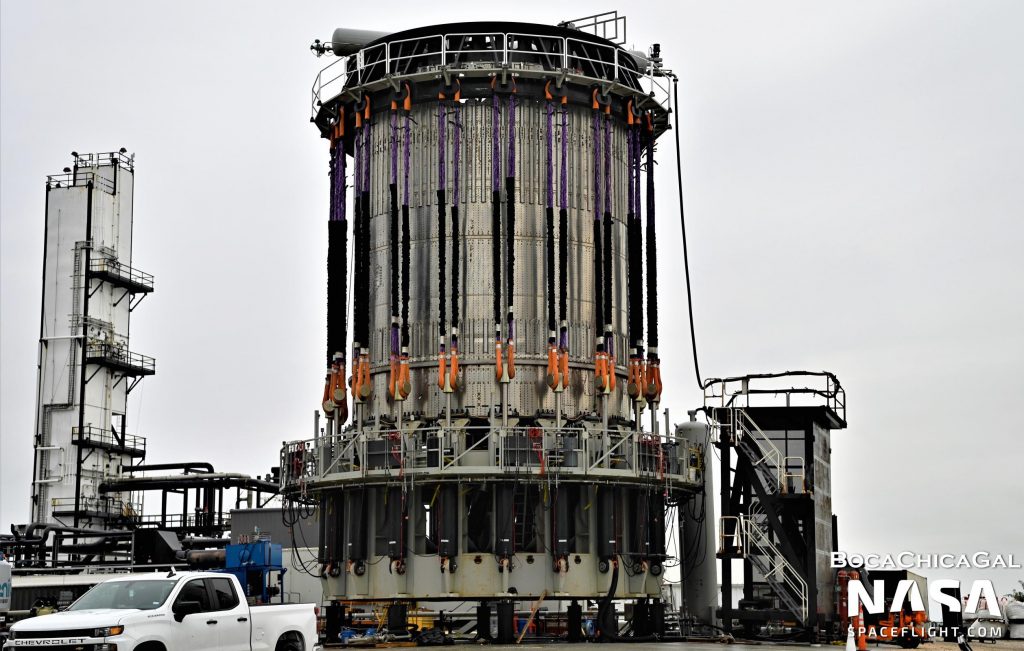
The design changes B7.1 is meant to test are not exactly radical, but it’s still unclear why SpaceX has chosen to conduct those tests after building two entire Super Heavy boosters. Earlier on in Starship development, SpaceX regularly used test tanks to qualify significant design changes before applying those changes to full prototypes, limiting the amount of resources that could be wasted on any unproven prototype. Thankfully, Super Heavy Booster 7 may have already completed similar Raptor thrust simulation tests on the same test stand B7.1 was recently installed on, meaning that SpaceX’s confidence may have been well-placed. However, if the first use of the ‘can crusher’ stand on a Super Heavy test tank finds any problems or ends in failure, B7 and B8 could still be easily rendered unusable or incapable of flight, significantly delaying Starship’s first orbital launch attempt.
Lately, SpaceX has been focused on preparing Starship S24 and Super Heavy B7 for static fire tests that could eventually qualify the pair to support the first orbital test flight. It’s not clear if or when SpaceX will be able to set aside time and evacuate Starbase’s busy orbital launch site to test B7.1 or the EDOME tank.

News
Tesla has passed a critical self-driving milestone Elon Musk listed in Master Plan Part Deux
Tesla China announced that the company’s Autopilot system has accumulated 10 billion kilometers of driving experience.
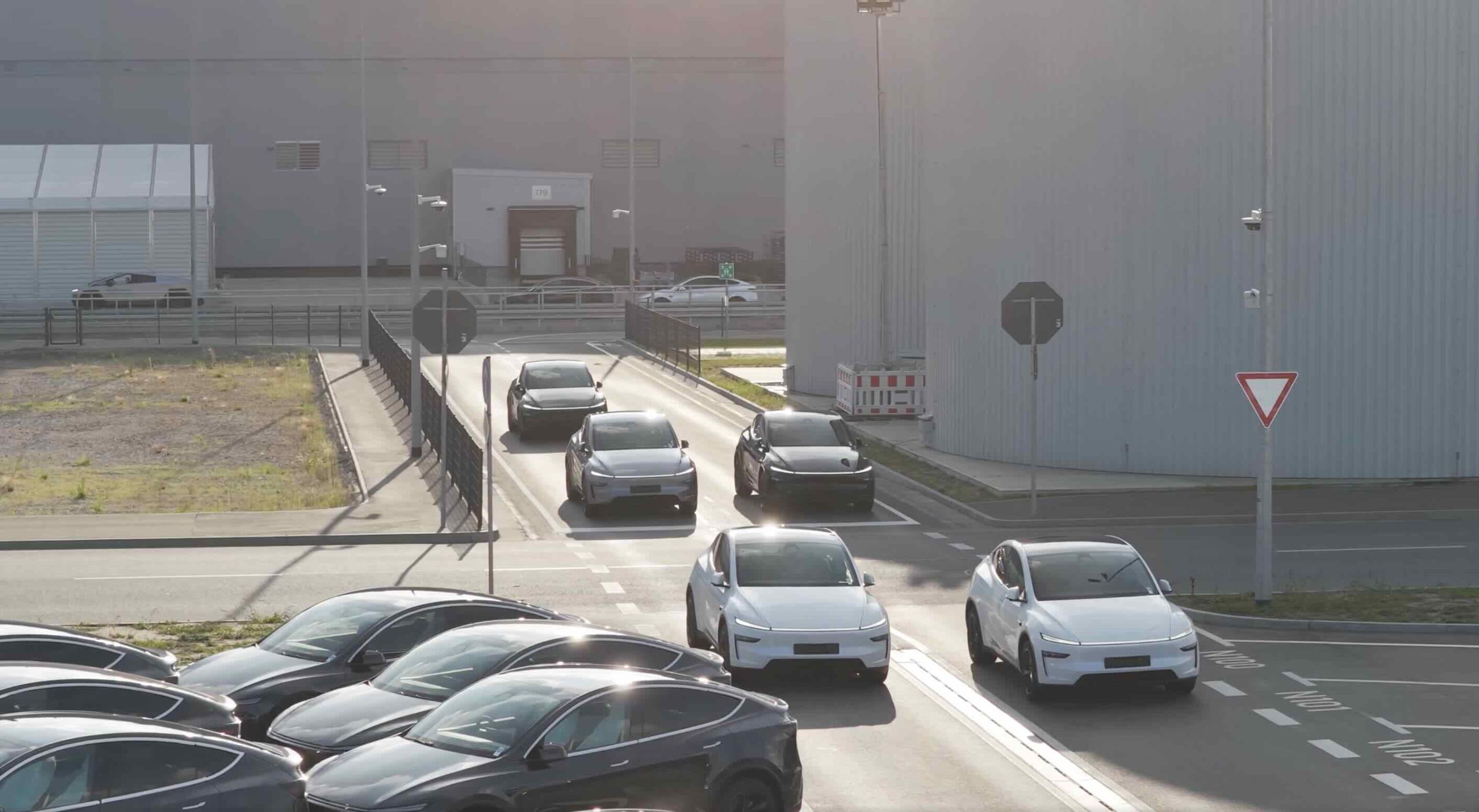
Tesla has passed a key milestone, and it was one that CEO Elon Musk initially mentioned more than nine years ago when he published Master Plan, Part Deux.
As per Tesla China in a post on its official Weibo account, the company’s Autopilot system has accumulated over 10 billion kilometers of real-world driving experience.
Tesla China’s subtle, but huge announcement
In its Weibo post, Tesla China announced that the company’s Autopilot system has accumulated 10 billion kilometers of driving experience. “In this respect, Tesla vehicles equipped with Autopilot technology can be considered to have the world’s most experienced and seasoned driver.”
Tesla AI’s handle on Weibo also highlighted a key advantage of the company’s self-driving system. “It will never drive under the influence of alcohol, be distracted, or be fatigued,” the team wrote. “We believe that advancements in Autopilot technology will save more lives.”
Tesla China did not clarify exactly what it meant by “Autopilot” in its Weibo post, though the company’s intense focus on FSD over the past years suggests that the term includes miles that were driven by FSD (Beta) and Full Self-Driving (Supervised). Either way, 10 billion cumulative miles of real-world data is something that few, if any, competitors could compete with.
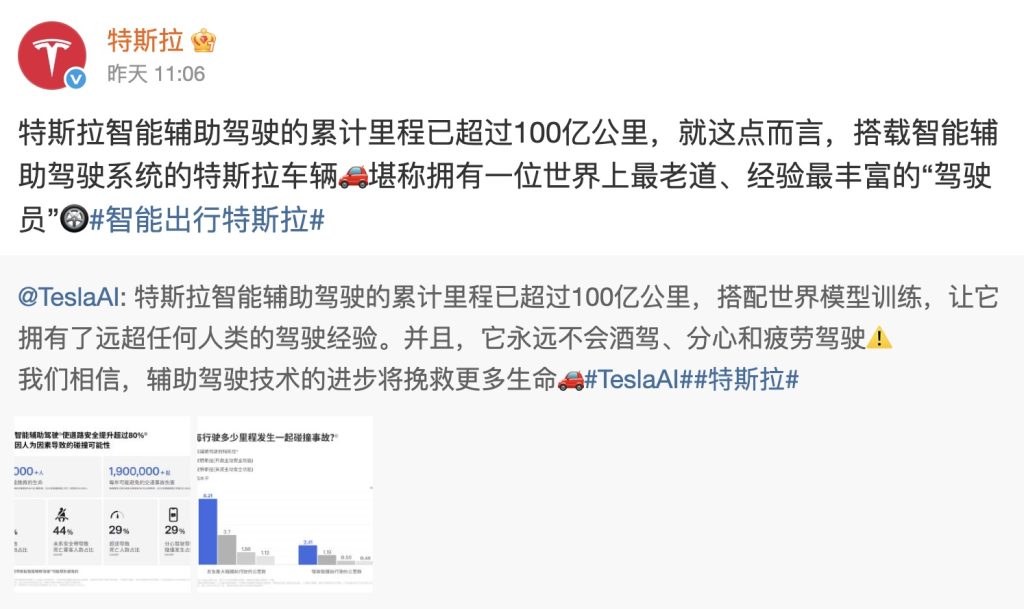
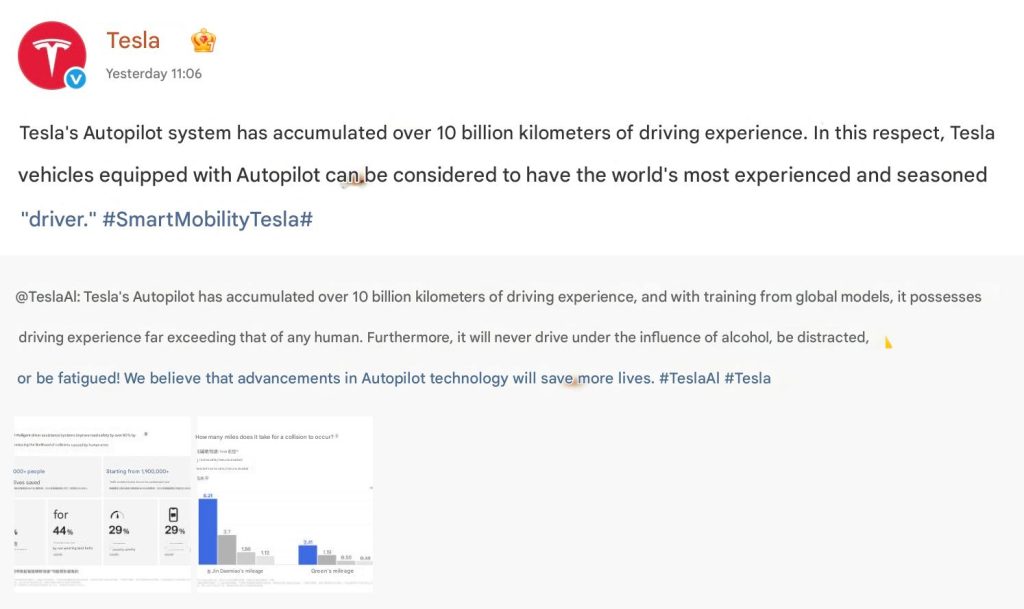
Elon Musk’s 10-billion-km estimate, way back in 2016
When Elon Musk published Master Plan Part Deux, he outlined his vision for the company’s autonomous driving system. At the time, Autopilot was still very new, though Musk was already envisioning how the system could get regulatory approval worldwide. He estimated that worldwide regulatory approval will probably require around 10 billion miles of real-world driving data, which was an impossible-sounding amount at the time.
“Even once the software is highly refined and far better than the average human driver, there will still be a significant time gap, varying widely by jurisdiction, before true self-driving is approved by regulators. We expect that worldwide regulatory approval will require something on the order of 6 billion miles (10 billion km). Current fleet learning is happening at just over 3 million miles (5 million km) per day,” Musk wrote.
It’s quite interesting but Tesla is indeed getting regulatory approval for FSD (Supervised) at a steady pace today, at a time when 10 billion miles of data has been achieved. The system has been active in the United States and has since been rolled out to other countries such as Australia, New Zealand, China, and, more recently, South Korea. Expectations are high that Tesla could secure FSD approval in Europe sometime next year as well.
Elon Musk
SpaceX maintains unbelievable Starship target despite Booster 18 incident
It appears that it will take more than an anomaly to stop SpaceX’s march towards Starship V3’s refinement.
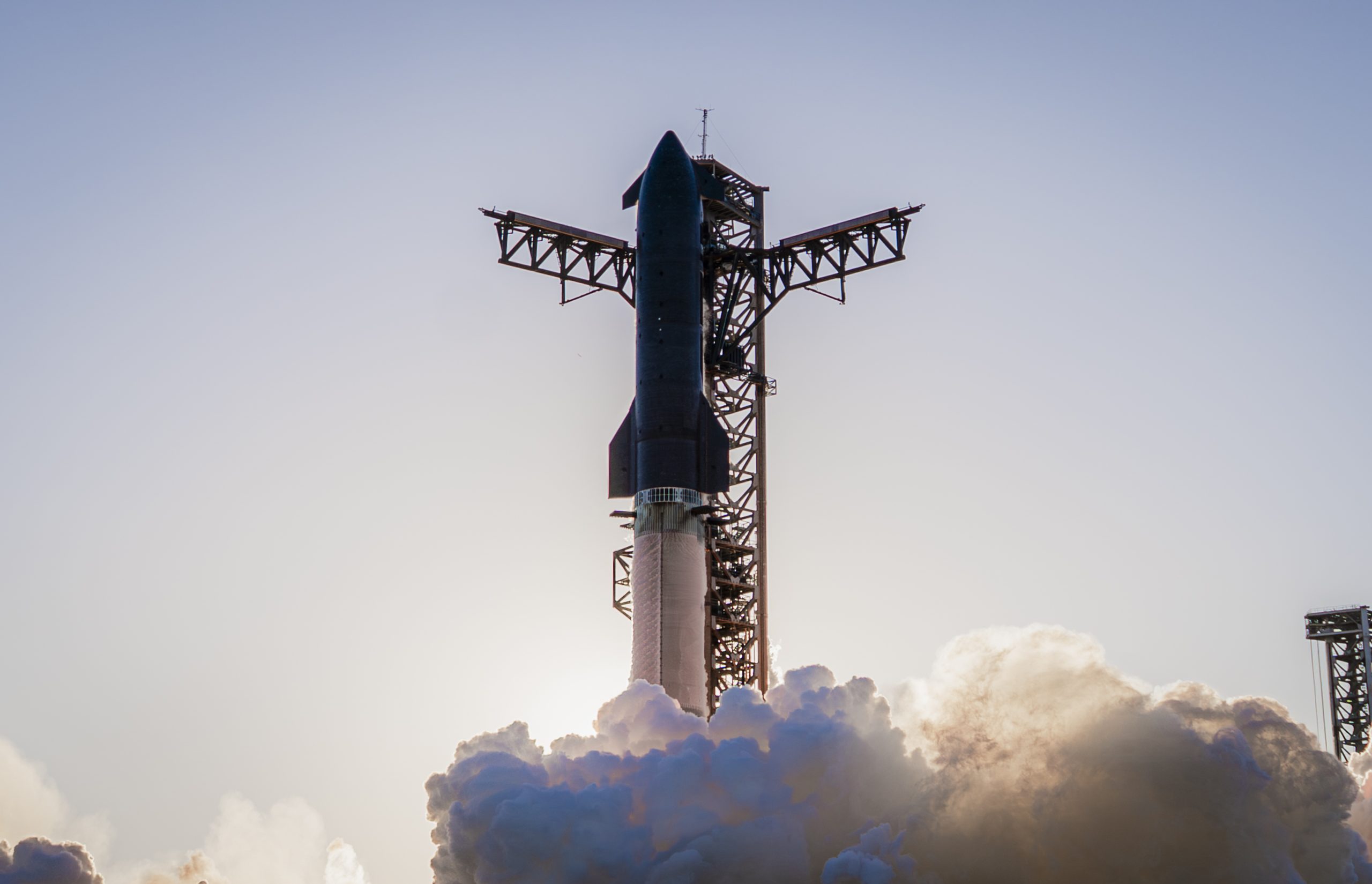
SpaceX recently shared an incredibly ambitious and bold update about Starship V3’s 12th test flight.
Despite the anomaly that damaged Booster 18, SpaceX maintained that it was still following its plans for the upgraded spacecraft and booster for the coming months. Needless to say, it appears that it will take more than an anomaly to stop SpaceX’s march towards Starship V3’s refinement.
Starship V3 is still on a rapid development path
SpaceX’s update was posted through the private space company’s official account on social media platform X. As per the company, “the Starbase team plans to have the next Super Heavy booster stacked in December, which puts it on pace with the test schedule planned for the first Starship V3 vehicle and associated ground systems.”
SpaceX then announced that Starship V3’s maiden flight is still expected to happen early next year. “Starship’s twelfth flight test remains targeted for the first quarter of 2026,” the company wrote in its post on X.
Elon Musk mentioned a similar timeline on X earlier this year. In the lead up to Starshp Flight 11, which proved flawless, Musk stated that “Starship V3 is a massive upgrade from the current V2 and should be through production and testing by end of year, with heavy flight activity next year.” Musk has also mentioned that Starship V3 should be good enough to use for initial Mars missions.
Booster 18 failure not slowing Starship V3’s schedule
SpaceX’s bold update came after Booster 18 experienced a major anomaly during gas system pressure testing at SpaceX’s Massey facility in Starbase, Texas. SpaceX confirmed in a post on X that no propellant was loaded, no engines were installed, and personnel were positioned at a safe distance when the booster’s lower section crumpled, resulting in no injuries.
Still, livestream footage showed significant damage around the liquid oxygen tank area of Booster 18, leading observers to speculate that the booster was a total loss. Booster 18 was among the earliest vehicles in the Starship V3 series, making the failure notable. Despite the setback, Starship V3’s development plans appear unchanged, with SpaceX pushing ahead of its Q1 2026 test flight target.
News
Tesla Sweden faces fresh union blockade at key Gothenburg paint shop
Allround Lack works with painting and damage repair of passenger cars, including Teslas.
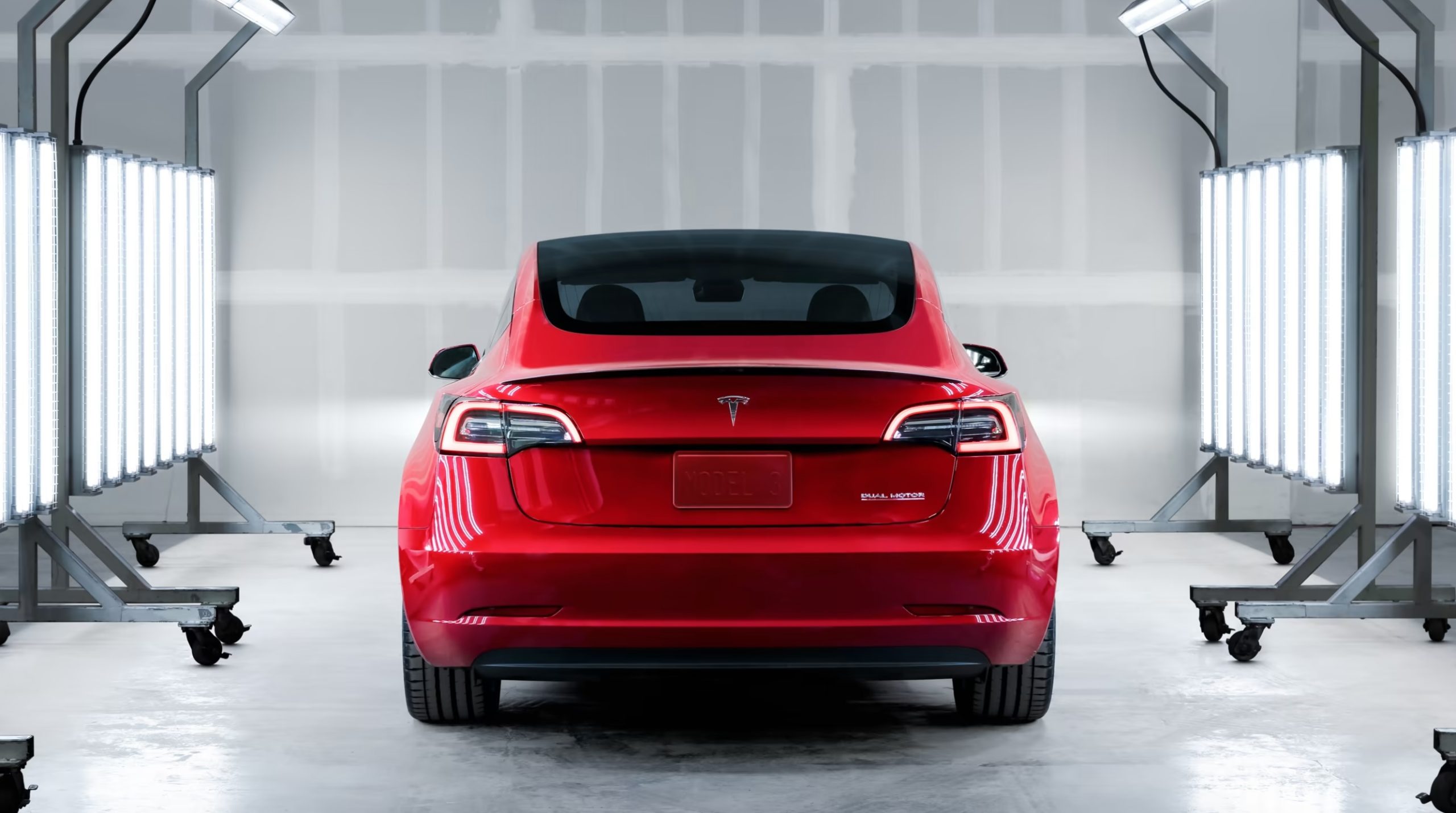
Tesla’s ongoing labor conflict in Sweden escalated again as the trade union IF Metall issued a new blockade halting all Tesla paintwork at Allround Lack in Gothenburg.
Allround Lack works with painting and damage repair of passenger cars, including Teslas. It currently employs about 20 employees.
Yet another blockade against Tesla Sweden
IF Metall’s latest notice ordered a full work stoppage for all Tesla-related activity at Allround Lack. With the blockade in place, paint jobs on Tesla-owned vehicles, factory-warranty repairs, and transport-damage fixes, will be effectively frozen, as noted in a report from Dagens Arbete. While Allround Lack is a small paint shop, its work with Tesla means that the blockade would add challenges to the company’s operations in Sweden, at least to some degree.
Paint shop blockades have been a recurring tool in the longstanding conflict. The first appeared in late 2023, when repair shops were barred from servicing Tesla vehicles. Days later, the Painters’ Union implemented a nationwide halt on Tesla paint work across more than 100 shops. Since then, a steady stream of workshops has been pulled into the conflict.
Earlier blockades faced backlash from consumers
The sweeping effects of the early blockades drew criticism from industry groups and consumers. Employers and industry organization Transportföretagen stated that the strikes harmed numerous workshops across Sweden, with about 10 of its members losing about 50% of their revenue.
Private owners also expressed their objections. Tibor Blomhäll, chairman of Tesla Club Sweden, told DA in a previous statement that the blockades from IF Metall gave the impression that the union was specifically attacking consumers. “If I get parking damage to my car, I pay for the paint myself. The company Tesla is not involved in that deal at all. So many people felt singled out, almost stigmatized. What have I done as a private individual to get a union against me?” Blomhäll stated.
In response to these complaints, IF Metall introduced exemptions, allowing severely damaged vehicles to be repaired. The union later reopened access for private owners at workshops with collective agreements. The blockades at the workshops were also reformulated to only apply to work that is “ordered by Tesla on Tesla’s own cars, as well as work covered by factory warranties and transport damage on Tesla cars.”








